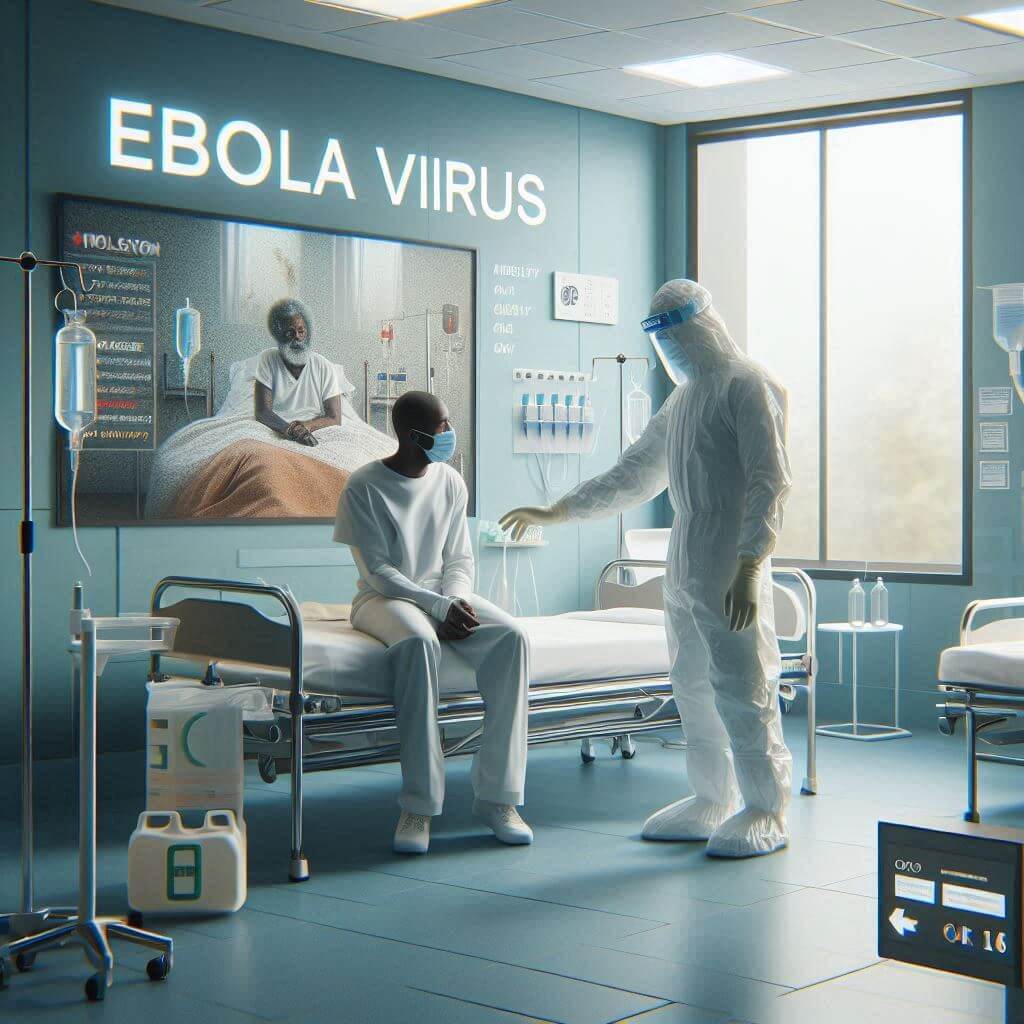As an Amazon Associate ,I earn from qualifying purchase .
The Ebola virus, a rare but deadly pathogen, has caused outbreaks with high mortality rates in certain regions, particularly in Africa. Given its potential for severe health impacts, understanding how to prevent Ebola virus infection and effectively manage outbreaks is crucial. This article will delve into the history, origin, infection control measures, and most effective methods for the prevention and treatment of Ebola virus. It is designed to be an analytical guide for public health professionals, individuals in affected regions, and anyone interested in learning about this deadly virus.

What is the Ebola Virus?
The Ebola virus, also known as Ebola hemorrhagic fever, is a viral infection that can cause severe bleeding, organ failure, and often leads to death. Named after the Ebola River in the Democratic Republic of the Congo where it was first identified, this virus belongs to the Filoviridae family. There are five distinct species of the Ebola virus, each of which varies in virulence and transmissibility. The most lethal species, Zaire ebolavirus, has been responsible for the majority of Ebola outbreaks.
Ebola is primarily spread through direct contact with the bodily fluids of an infected person or animal, particularly during the late stages of the disease. Its rapid onset, high mortality rate, and dramatic symptoms make it a dangerous pathogen, especially in areas with limited healthcare infrastructure.
A Brief History and Origin of Ebola Virus
Ebola virus outbreaks were first recorded in 1976 in two simultaneous incidents: one in Zaire (now the Democratic Republic of Congo) and the other in Sudan. In both locations, the virus caused devastating epidemics with high mortality rates, and researchers struggled to understand its source. Over time, scientists hypothesized that fruit bats might serve as natural hosts of the virus, as these animals can carry the Ebola virus without exhibiting symptoms.
Subsequent outbreaks have primarily occurred in remote villages in Central and West Africa, near tropical rainforests. The largest recorded outbreak took place between 2014 and 2016, affecting several West African countries, including Guinea, Liberia, and Sierra Leone. This outbreak highlighted global health challenges related to infectious diseases, underscoring the importance of international cooperation, improved healthcare infrastructure, and effective prevention and treatment strategies.

Understanding Ebola Virus Transmission
Direct Contact with Bodily Fluids
The Ebola virus is not airborne; it spreads primarily through direct contact with bodily fluids of an infected person or animal. These fluids include blood, saliva, mucus, sweat, urine, feces, vomit, breast milk, and semen. The virus can enter the body through broken skin or mucous membranes, such as the eyes, nose, or mouth.
Contact with Contaminated Surfaces and Objects
In addition to direct contact with bodily fluids, surfaces or objects that have been contaminated by these fluids can also harbor the virus. Healthcare workers are at particular risk if they do not use proper personal protective equipment (PPE) when handling infected individuals or contaminated medical equipment.
Human-to-Human Transmission
Transmission from one person to another typically occurs in healthcare settings or through contact with family members caring for sick loved ones. Strict infection control measures are essential to prevent human-to-human transmission.

What Are the Ebola Infection Control Measures?
Given the high risk of transmission in healthcare and community settings, infection control measures are crucial to preventing the spread of Ebola virus. Key strategies include:
- Isolation of Infected Individuals
Infected patients must be isolated to prevent the virus from spreading. Isolation facilities equipped with proper barriers can significantly reduce the risk of human-to-human transmission. - Use of Personal Protective Equipment (PPE)
Healthcare workers are at high risk of contracting Ebola due to their close contact with infected patients. PPE, such as gloves, masks, gowns, and eye protection, creates a barrier between the virus and healthcare workers, significantly reducing transmission risk. - Safe Burial Practices
Traditional burial practices, particularly in some African cultures, often involve direct contact with the body of the deceased. The virus remains active in the body even after death, so handling an infected corpse without precautions can lead to new infections. Health organizations now recommend strict safety protocols during burials to prevent further transmission. - Hygiene and Sanitation
Regular handwashing with soap and water, use of alcohol-based hand sanitizers, and thorough disinfection of surfaces can prevent the virus from spreading. Healthcare facilities should prioritize rigorous cleaning of all areas exposed to infected patients. - Community Awareness and Education
In areas susceptible to Ebola outbreaks, educating communities about how the virus spreads and how to prevent it can be one of the most effective tools in containing outbreaks. Public health campaigns and community outreach initiatives play a critical role in raising awareness and encouraging preventative measures.

What is the Prevention and Treatment of Ebola?
Prevention Strategies
- Vaccination
While no antiviral treatment was initially available, significant progress has been made in developing vaccines against Ebola. The rVSV-ZEBOV vaccine, for example, was deployed during the 2018-2020 Ebola outbreak in the Democratic Republic of the Congo. This vaccine is administered to those at high risk of infection and has proven effective in controlling outbreaks. - Early Detection and Screening
Early diagnosis of Ebola is essential for effective treatment and containment. In affected regions, rapid diagnostic tests help identify infected individuals quickly, enabling them to be isolated and receive medical care promptly. - Quarantine Protocols
Strict quarantine measures are implemented for individuals who may have been exposed to the virus. This practice minimizes the risk of transmission and helps prevent widespread outbreaks. - Travel Restrictions and Border Screenings
During active outbreaks, governments and health organizations may enforce travel restrictions and conduct screenings at airports and borders to identify potential cases early.
Treatment of Ebola
Ebola treatment remains challenging, as there is no cure for the virus. However, supportive care and symptomatic treatments can significantly improve survival rates. Supportive care focuses on:
- Hydration and Electrolyte Balance: Severe dehydration is common in Ebola patients, so intravenous fluids and electrolyte management are critical to maintain essential bodily functions.
- Oxygen Therapy and Blood Pressure Stabilization: Due to the virus’s effects on the circulatory and respiratory systems, oxygen therapy and blood pressure medications can help support patients through the critical phases of the disease.
- Pain Management and Symptom Relief: Treating symptoms like fever, pain, and nausea can help make patients more comfortable and can aid in recovery.
In recent years, monoclonal antibody treatments have shown promising results in clinical trials. For instance, the REGN-EB3 and mAb114 treatments were developed specifically to combat the Ebola virus. When administered early, these therapies have improved survival rates and are a significant advancement in Ebola management.

Ebola Virus Prevention at the Community Level
Raising Public Awareness
Community leaders and health educators play a vital role in disseminating information about Ebola prevention. Understanding how the virus spreads, recognizing symptoms early, and adopting safe healthcare practices are essential components of community-wide prevention efforts.
Encouraging Safe Animal Handling
Since Ebola can be transmitted from animals to humans, people in affected regions are advised to avoid contact with wild animals, especially fruit bats and non-human primates. Educating communities about the risks associated with handling and consuming wild game can help reduce the likelihood of zoonotic transmission.
Supporting Healthcare Infrastructure
Strong healthcare systems are essential in Ebola prevention and treatment. Healthcare facilities need resources for training staff, procuring PPE, and implementing infection control measures. Investing in healthcare infrastructure not only helps combat Ebola but also strengthens a community’s overall resilience against infectious diseases.

The Role of International Cooperation in Preventing Ebola
Ebola virus outbreaks require a coordinated global response to prevent the disease from spreading across borders. International organizations, such as the World Health Organization (WHO) and the Centers for Disease Control and Prevention (CDC), work closely with affected countries to provide medical assistance, establish outbreak response strategies, and support vaccine distribution efforts. Global partnerships are vital for addressing outbreaks quickly and effectively.
Conclusion
Preventing and treating Ebola virus is a complex but essential public health goal. As we learn more about the virus, proactive measures like vaccination, quarantine, and education continue to prove effective in controlling outbreaks. However, the potential for future epidemics remains, making continued vigilance and investment in healthcare infrastructure necessary to safeguard communities. By understanding the transmission pathways, implementing strict infection control measures, and supporting global cooperation, we can prevent the spread of Ebola and work toward a future where this deadly virus no longer poses a threat.
This article provided a comprehensive analysis of Ebola prevention and treatment. For anyone concerned about how to prevent Ebola virus, the key lies in understanding its transmission, following effective infection control protocols, and supporting healthcare systems in affected areas.







